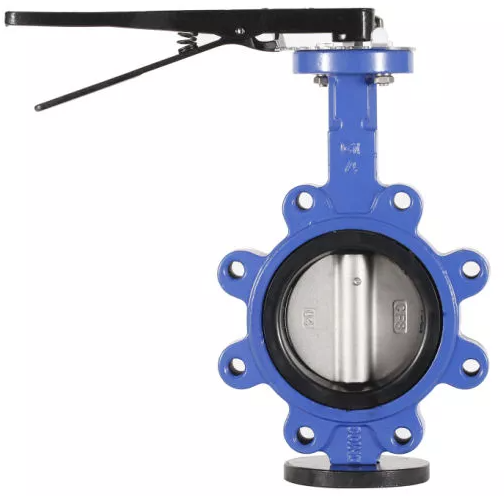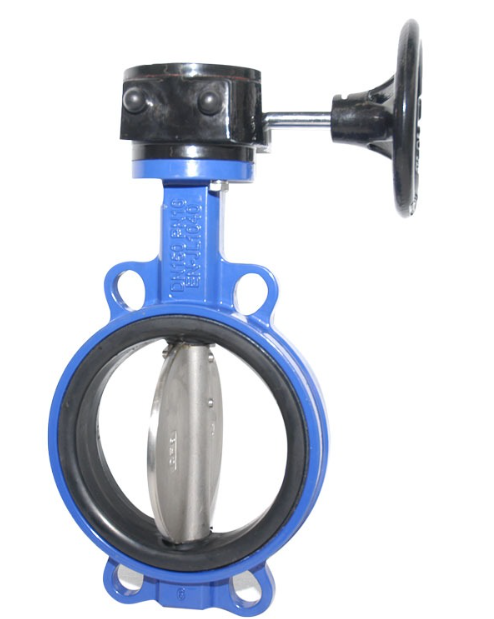Lug-style butterfly valves are usually composed of metal such as ductile iron or steel. They feature threaded tapped lugs positioned on the valve flanges for bolt connections.

A wafer butterfly valve’s function is to retain a seal to protect against dual-directional pressure differential in the flow of fluid. In other words, the wafer version of butterfly valves was designed to hold a tight seal, safeguarding against bi-directional pressure differential in order to avoid any backflow in systems that have been manufactured for uni-directional flow. This is accomplished by using a tightly fitted seal, such as an O-ring, gasket, precision machined, along with a flat valve face on the downstream and upstream sections of the valve.

In the case of a Wafer-style butterfly valve, the body is annular with a few non-tapped centering holes. Some Wafer types have two while others have four.
The flange bolts are inserted through the bolt holes of the two pipe flanges and the centering holes of the butterfly valve. By tightening the flange bolts, the pipe flanges are pulled towards each other and the butterfly valve is clamped between the flanges and held in place.
In the case of a Lug-style butterfly valve, there are so-called “ears” over the entire circumference of the body into which threads were tapped. In this way, the butterfly valve can be tightened against each of the two pipe flanges by means of 2 separate bolts( one on each side).
Because the butterfly valve is attached to each flange on both sides with separate, shorter bolts, the chance of relaxation through thermal expansion is smaller than with a Wafer-style valve. As a result, the Lug version is more suitable for applications with large temperature differences.
VALTECCN Valve is a professional industrial butterfly valve manufacturer and water valve manufacturer in Tianjin, China.
Copyright:@2020-2021
Comments Please sign in or sign up to post.
0
0 of 500 characters used